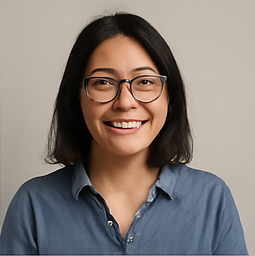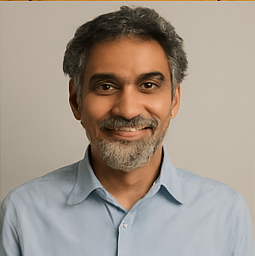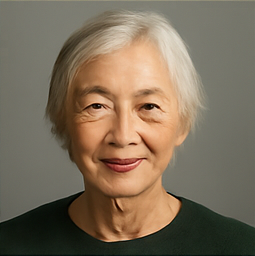Artificial Intelligence Provides Fresh Insights into the Dating of Ancient Dead Sea Scrolls










2025-06-04T18:00:00Z
Researchers have made a groundbreaking advancement in the understanding of the Dead Sea Scrolls, a collection of ancient religious manuscripts that has fascinated historians and scholars since their discovery. These texts, most of which were written on parchment approximately 2,000 years ago, are primarily found in fragmentary form. The recent study utilized a sophisticated artificial intelligence (AI) model trained on carbon-dated samples of the scrolls to predict more accurate dating for these ancient texts.
The research revealed that several of the scrolls are older than previously estimated, potentially identifying the oldest known examples of biblical texts that have endured since they were first composed. By analyzing scripts and images with AI, the team aims to provide more precise dating for artifacts when traditional methods, such as carbon dating, prove ineffective.
Discovered between 1946 and 1956 by a Bedouin shepherd in the Qumran caves, located in the West Bank, the Dead Sea Scrolls comprise one of the most substantial collections of religious manuscripts ever unearthed. Scholars regard many of these scrolls as the earliest surviving copies of biblical texts. Although it is known that the scrolls date back between 2,500 and 1,800 years, only a small fraction has specific dates inscribed, which are crucial for understanding the evolution of Judaism and early Christianity.
In a collaborative effort, an international team of researchers combined AI techniques with carbon dating and handwriting analysis to fill in some of the gaps in the timeline of the Dead Sea Scrolls. Their findings were published in the journal PLOS One, where they proposed new ages for over 100 scroll fragments, with many of these fragments dating back further than previously recognized.
Dr. Gareth Wearne, a researcher specializing in biblical studies and ancient Israel's history at the Australian Catholic University, emphasized the significance of this research in reshaping our understanding of the Dead Sea Scrolls. He stated, "It potentially has implications for how we think about how the material came to be copied and disseminated at the beginning of the process that ultimately led to them being included in the biblical canon."
Traditionally, radiocarbon dating has been the go-to method for determining the age of archaeological artifacts, including the Dead Sea Scrolls. However, this technique has its limitations, such as susceptibility to contamination and imprecise results, especially for items from the ancient period in which the scrolls were composed. Mladen Popović, an archaeologist from the University of Groningen and the lead author of the study, noted that radiocarbon dating is also a destructive procedure that can compromise precious artifacts.
While most of the Dead Sea Scrolls were written in Hebrew, some are scribed in Aramaic, Greek, Latin, and Arabic, broadening the linguistic scope of this ancient collection. Another method frequently employed in scroll studies is palaeography—the analysis of handwriting styles over centuries. However, like carbon dating, this technique can also yield inaccuracies, prompting researchers to seek innovative methods to date the scrolls.
In their study, the team carbon-dated 24 samples of the Dead Sea Scrolls and subsequently utilized machine learning, a subset of AI, to analyze the handwriting in the scrolls. This AI model, aptly named Enoch after a biblical figure known for his wisdom, was trained to predict the ages of 135 additional scrolls based on their scripts. The results were remarkable: the AI's predictions, combined with the carbon dating, indicated that many of the scrolls were indeed older than scholars had previously thought—by decades in some cases.
Notably, one particular scroll containing a fragment from the Book of Daniel was carbon-dated to between 230 and 160 BCE, making it potentially up to 100 years older than earlier estimates. This finding is significant as it aligns closely with the period when the text itself is believed to have been composed, based on historical references within the scripture.
Similarly, another scroll, which features text from Ecclesiastes, was dated by the Enoch AI to the third century BCE, a time frame that contrasts sharply with previous assumptions placing its creation in the mid-second century BCE. If validated, these fragments would represent the earliest known examples of biblical texts from the period of their original composition.
In an assessment of the AI's predictions, expert palaeographers corroborated that approximately 79 percent of the results were realistic. Dr. Wearne hailed these findings as "the single greatest step forward since the development of the original, conventional dating system" in the 1940s, underscoring the need to reassess the social and historical contexts surrounding the production of the scrolls.
Andrea Jalandoni, an archaeologist at Griffith University who did not participate in the study, praised the integration of diverse techniques that enhanced the AI's reliability. However, she did express concern that the AI model was trained on a relatively small data set, which could impact its overall accuracy. Looking ahead, Professor Popović intends to apply the Enoch AI model to additional Dead Sea Scrolls, as well as other ancient Aramaic texts, such as the Elephantine Papyri.
Dr. Jalandoni, who also explores rock art in Australia and Southeast Asia, found inspiration from this study for her research. She reflected, "I was looking at this and thinking: 'Wow, I wonder if I can do this with rock art?'" Given the challenges in carbon dating rock art due to the minimal carbon content, she sees potential in developing a machine learning model that could predict dates aligned with various other dating methodologies.
 Hana Takahashi
Hana Takahashi
Source of the news: Australian Broadcasting Corporation